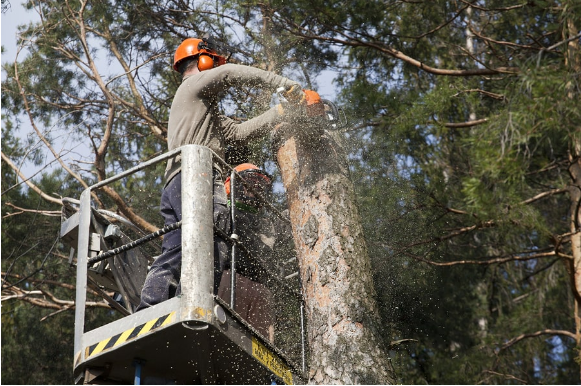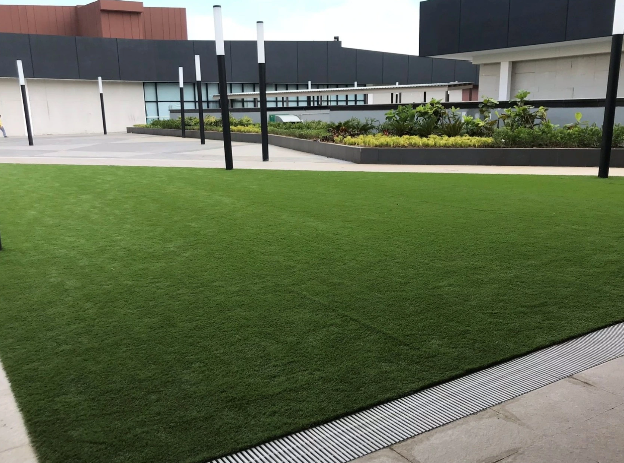Tree cutting is more than just a way to manage your landscape; it’s a critical practice for ensuring safety and protecting property. Understanding the proper techniques for tree removal not only helps in maintaining the health of your trees but also mitigates potential hazards that can arise from neglecting damaged or hazardous trees. In this guide, we’ll explore why tree cutting is necessary, the techniques used, and how to ensure the process is conducted safely and effectively.
Why Tree Cutting is Necessary
Health of the Tree: Trees that are sick, dying, or dead can pose significant risks. A tree in poor health might not only be unsightly but also structurally compromised, making it a potential hazard. Signs of ailing trees include discolored leaves, brittle branches, and signs of decay or fungal growth. Addressing these issues promptly can prevent accidents and protect your property.
Safety Hazards: Hazardous trees can lead to dangerous situations. Dead or severely damaged trees are at risk of falling, especially during adverse weather conditions. This can result in falling branches or even the entire tree toppling over, potentially causing injury or property damage. Removing these trees before they become a problem is crucial for maintaining safety.
Property Protection: Tree roots can grow extensively, sometimes reaching and damaging building foundations or underground utilities. Root systems that invade property structures can lead to costly repairs and severe damage. By removing the tree and its roots, you can prevent these issues and safeguard your property.
Understanding Different Tree Cutting Techniques
Sectional Felling: Sectional felling is a precise method where the tree is dismantled in sections from the top down. This technique is beneficial for trees in tight spaces or near structures, as it allows for controlled removal of each section, minimizing risk. The process involves:
- Assessing the Tree: Determining the fall direction and potential hazards.
- Cutting Sections: Carefully removing the tree in manageable pieces.
- Processing Sections: Each section is lowered safely and processed for removal.
Cut to Ground Level: This technique involves cutting the tree down to the ground level. It is typically used when there is ample space and the tree’s removal does not pose a risk to nearby structures. This method is straightforward and efficient, but it might not be suitable for trees with extensive root systems that could affect the property.
Grubbing Up Roots: Removing the tree’s roots, or “grubbing,” is essential for preventing future property damage. Roots that continue to grow can cause problems with foundations and underground utilities. Methods for grubbing include:
- Mechanical Removal: Using specialized equipment to dig out roots.
- Chemical Treatments: Applying substances to inhibit root growth.
Safety Considerations
Personal Safety: Tree cutting involves significant risks, so using proper safety gear is essential. This includes helmets, gloves, goggles, and hearing protection. Following safety guidelines ensures that the process is conducted without harm to those involved.
Professional Assistance: Hiring a certified arborist ensures that the tree cutting is handled by someone with the expertise to assess and manage risks effectively. Certified professionals have the training and equipment needed to carry out tree removal safely and efficiently.
Weather Conditions: Weather can greatly impact tree cutting operations. Avoid cutting during storms, heavy rain, or strong winds, as these conditions increase the risk of accidents. Monitoring the weather forecast and planning accordingly helps ensure a safer process.
Choosing the Right Tree Cutting Service
Credentials and Experience: When selecting a tree cutting service, look for a company with certified arborists and a proven track record. ISA certification indicates a high level of expertise and adherence to industry standards.
Evaluating Tree Health: A professional arborist will conduct a thorough assessment of the tree’s health and potential risks. This evaluation is crucial for determining the most appropriate cutting technique and ensuring a safe removal process.
Cost and Estimates: Tree cutting services vary in cost based on the complexity of the job. Requesting a detailed estimate helps you understand the scope of work and avoid unexpected expenses. Many services offer free consultations to evaluate your needs.
Post-Cutting Considerations
Cleanup: Proper cleanup after tree removal involves disposing of debris and ensuring no remnants are left behind that could pose a hazard. This step is crucial for maintaining a clean and safe environment.
Inspection and Maintenance: After cutting, it’s important to inspect the area for any potential issues and conduct maintenance as needed. This includes checking for any damage to the surrounding property and ensuring that the area remains safe and functional.
Takeaway
Safe and effective tree cutting is essential for maintaining the health of your landscape and ensuring the safety of your property. By understanding the necessary techniques and considerations, you can make informed decisions about tree removal and protect your home from potential hazards.











